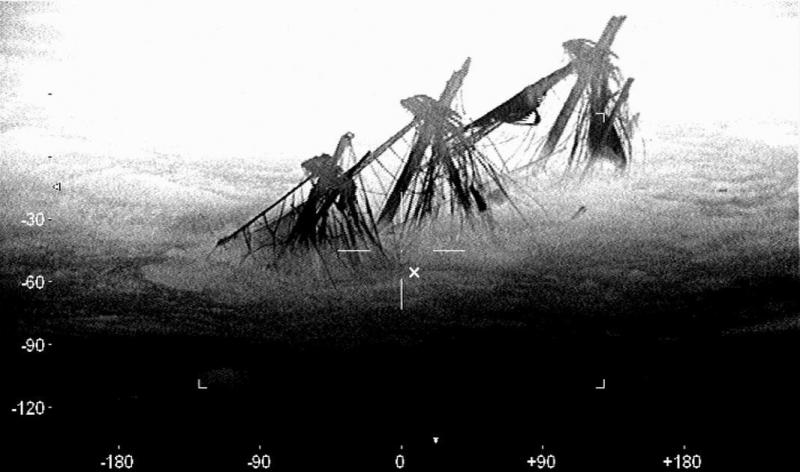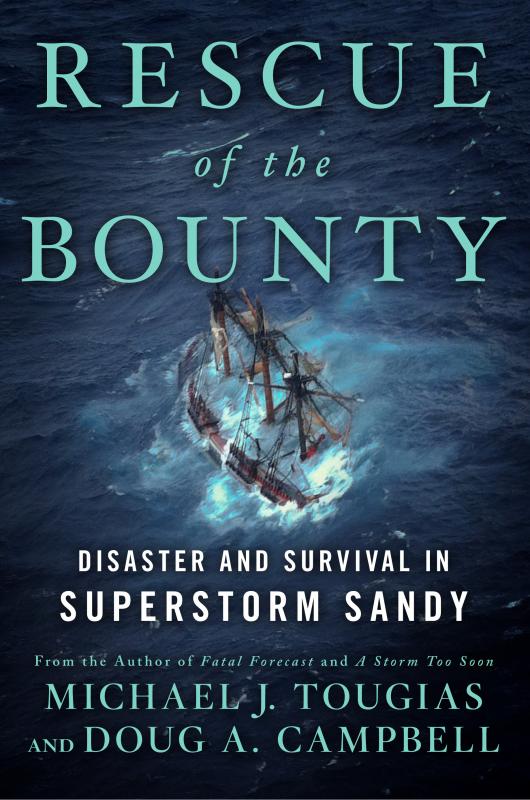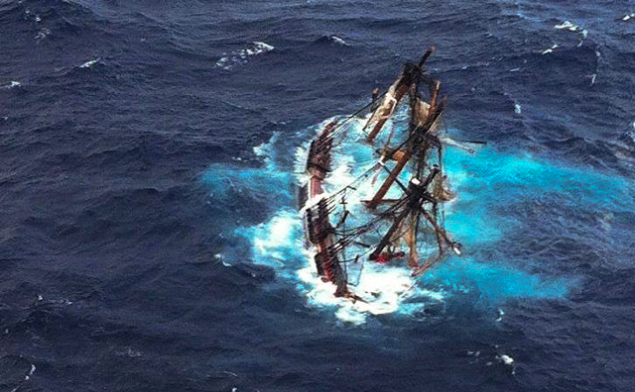New book, ‘Rescue of the Bounty,’ subject of BHML program
The pilot of the C-130 said one gust of wind blew the aircraft 400 feet upward, and when that gust passed it plummeted 300 feet. The co-pilot was the first to spot the Bounty in the hurricane-churned Atlantic Ocean.
The pilot asked, “What do you see?”
“It looks like a pirate ship in the middle of a hurricane — and it's listing badly,” replied the copilot.
In little over an hour, the Bounty would capsize, 90 miles off the coast of North Carolina in an area of the ocean known as the “Graveyard of the Atlantic,” throwing her 16-member crew into a sea of 30-foot waves.
This is part of the story told in “Rescue of the Bounty,” by Michael Tougais. He and author Douglas A. Campbell spent 18 months on the project.
After the tragic sinking of the Bounty, one question stood out among all others: why?
Why did Captain Robin Walbridge, an experienced seaman, decide to take his ship and 16-person crew out to sea when a hurricane was brewing.
This question, and the lack of an answer, compelled Tougais to want to write a book about the captain's motivations. Tougais and Campbell interviewed crew members, family members of Walbridge and Claudene Christian (the only two to perish), and the Coast Guard. Campbell attended the five days of Coast Guard hearings. All told, the two men conducted 100s of hours of interviews.
“Rescue of the Bounty,” chronicles the events leading up to the October 29, 2012 tragedy, before the 180-foot sailboat left New London, Conn., October 25 bound for St. Petersburg, Fla.
“All of my books are character driven,” said Tougais, author of 23 books, most of nautical, historical content. “I needed to get into the mind of the captain and the minds of the crew, and the rescue team and what they were going through and the tough decisions they had to make.”
According to Tougais, a fundraiser was scheduled in St. Pete, and it has been considered as a possible motivating factor for the captain to keep to sea. The ship was in need of further, and costly, repairs when it left the Boothbay Harbor Shipyard bound for New London.
The crew members who agreed to speak with Tougais were consistent in their recollection of how things went before and after they were at sea.
“They had incredible trust in their captain,” Tougais said. “Many of the crew members were in their 20s and on their first sail. The fact that they were young played a major role in their survival. As one crew member told me, 'We were a team, the decision came and we felt we were up to it — to get around the hurricane’.”
Unfortunately for all, once the beginning effects of the storm were felt, they began to, as Tougais said, “cascade.”
Three days into the voyage, Walbridge changed his south-southeast course, moving to the southwest. That, discovered Tougais and Campbell, was when the trouble began.
“The Bounty is now crossing in front of the hurricane with waves large enough to batter the boat, waves are washing over the deck and the pumps are not keeping up. A generator goes out, sails unfurling, and then there are injuries — including the captain,” Tougais said. “Walbridge was in the ship's great room and his lower back hit the table. He must have been in great pain and moving slowly. But no one could have taken a break. No one. The crew was also battling extreme exhaustion.”
The good news for the Bounty: when Walbridge managed to contact the USCG to tell them they were having some trouble, the USCG decided to send a C-130 plane out to establish communication, while they still could.
Once on the scene, the pilot managed to contact Walbridge. The situation was grave.
The USCG reported back to command after speaking with the captain. The pilot was told weather and sea conditions were so dangerous that launching a rescue helicopter had to wait until morning. The C-130 crew was advised to stay on the scene and monitor the situation.
About an hour later the C-130 crew heard “Abandon ship! Abandon Ship!” on the radio.
And then there was silence.
Learn more about Tougais and Campbell's findings and view the slide presentation of USCG photos and video, sponsored by the Boothbay Harbor Memorial Library (BHML) on Thursday, July 8, in the Boothbay Region High School gym. The program will begin at 7 p.m. Call Barb House after June 24 (when the new, improved library has reopened) at 207-633-3112 to sign up.
Copies of “Rescue of the Bounty” will be available for purchase and signing by the author.
For those who are unable to attend due to the time of the event, Tougais will also be at the Maine Maritime Museum in Bath on July 10 for a 6 p.m. presentation.
For more on Tougais, and to view USCG footage of the rescue, visit www.michaeltougais.com.
Event Date
Address
236 Townsend Avenue
Boothbay Harbor, ME 04538
United States
































